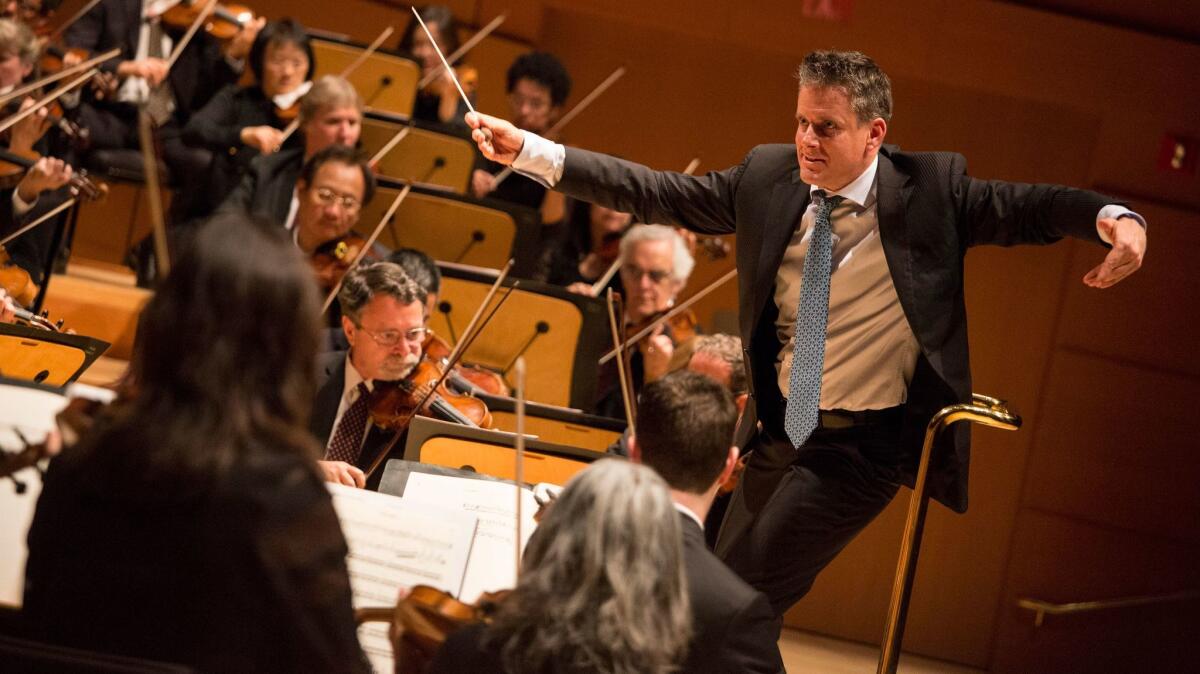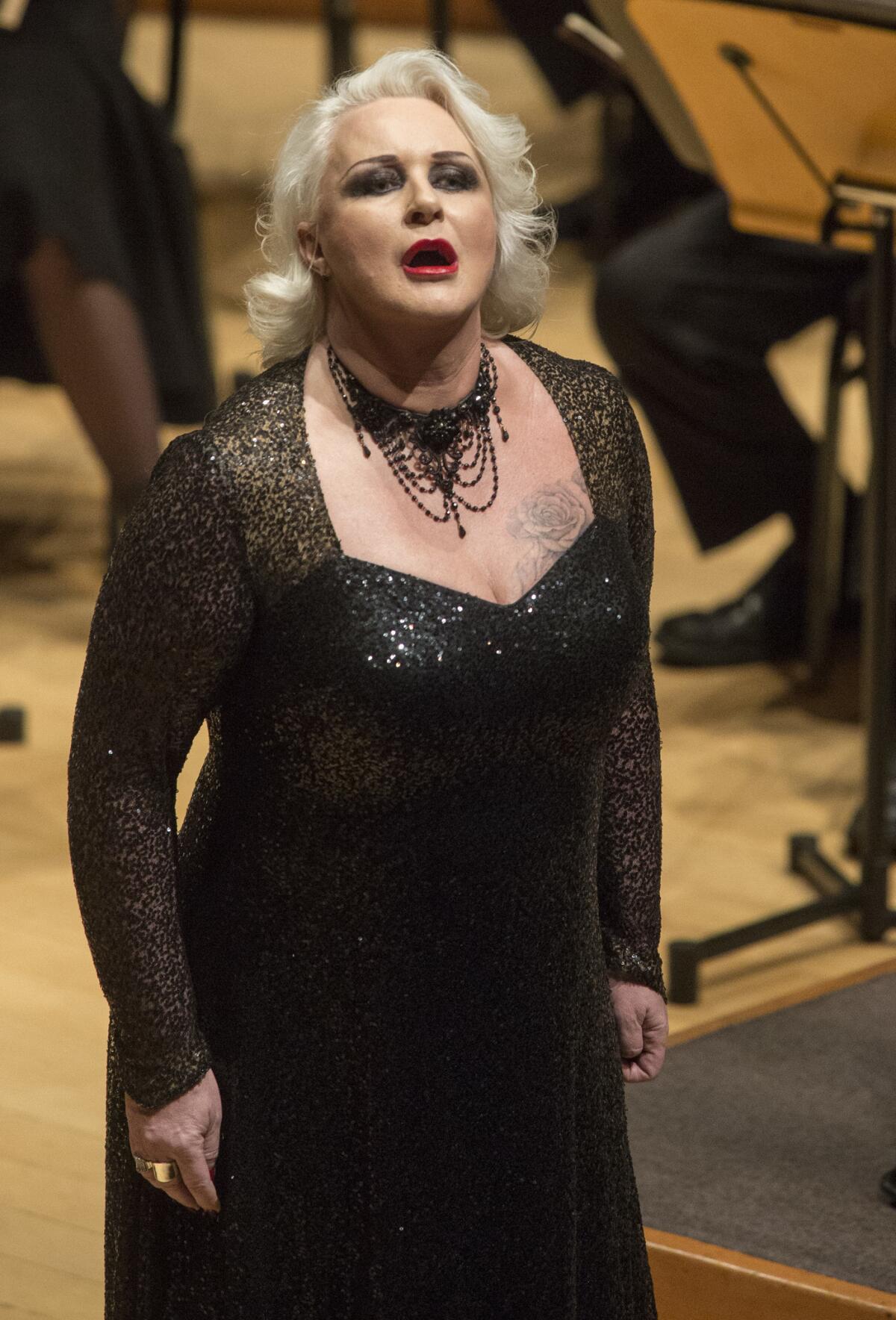Review: A Wagner ‘Ring’ sampler: Short, but still so much to savor

Richard Wagner’s gigantic “Der Ring des Nibelungen” cycle is no longer a rare creature. We’re flooded with recordings of the “Ring,” and more opera companies worldwide have been staging the whole shebang. Even once-Wagner-starved Los Angeles finally got one in 2010. Consequently, we’re at the point where hearing mere excerpts from the “Ring” in concert has become as unfashionable as hearing Baroque music on modern instruments. Our loss.
So it was up to Philippe Jordan, in his belated debut with the
Of course, you cannot possibly get a full charge of what the “Ring” is all about from 85 minutes of orchestral passages mostly shorn of the voices and a libretto inextricably tied to Wagner’s complex web of leitmotifs. But heard this way Saturday night, the “Ring” thrust the audience into the center of Wagner’s orchestral sound world to savor the details and to see some of the more unusual aspects. The L.A. Phil went all-out, using five harps, a quartet of Wagner tubas and a set of tuned anvils bonging away in the descent into Nibelheim from the first “Ring” opera, “Das Rheingold.”
SIGN UP for the free Essential Arts & Culture newsletter »
Jordan, 42, is the music director of the Opera National de Paris and chief conductor of the Vienna Symphony. He has good Wagner credentials, having led all of the composer’s operas in the repertory by now. His father was Swiss conductor Armin Jordan, a distinguished Wagner interpreter himself (particularly in “Parsifal”). He brought the “Ring” to the Paris Opera in 2013, and he will also be in charge of the Metropolitan Opera’s New York revival of Robert LePage’s hotly debated “Ring” in spring 2019.
For this concert, Jordan presented a distillation of many of the most familiar and potent passages from the “Ring,” plus a few that aren’t as well known. “Das Rheingold” is difficult to excerpt, so Jordan came up with a continuous suite that surveyed some territory not often explored in orchestral versions before finally ascending to Valhalla. The second “Ring” opera, “Die Walküre,” was represented by concert versions of “Ride of the Valkyries” and “Magic Fire Music.” The third, “Siegfried,” was represented by a ravishingly beautiful account of the “Forest Murmurs.” Jordan astutely stopped for intermission here, for Wagner broke off composition of his “Ring” at exactly this spot, resuming 12 years later.

“Götterdämmerung” received the most extensive exposure, nearly as much as the rest of the cycle combined, with “Dawn and Siegfried’s Rhine Journey” melting into “Siegfried’s Funeral March” and “Brünnhilde’s Immolation.” Up until this point, the tall, lean Jordan, working without scores, was taking a mostly propulsive trip through the “Ring,” which probably made sense because there wasn’t much time or opportunity to indulge in introspection.
But in “Götterdämmerung,” Jordan could relax and luxuriate, building plenty of suspense for the “Funeral March” climax and tension in order to pull off the final cataclysms. And in the “Immolation,” he had a voice to work with in the Swedish soprano Iréne Theorin, an experienced Brünnhilde who overcame an initially wobbly vibrato with dramatic insight and enough amplitude to rise above the massive orchestra. The L.A. Phil, perhaps drawing upon the Wagnerian DNA implanted from the “Tristan Project” a decade ago, responded splendiferously.
Support coverage of SoCal arts. Share this article.
ALSO
A spiritually yearning Beethoven Ninth in Pasadena
L.A. Phil lives up to the hype with electrifying guest conductor David Robertson
'Evan Hansen,' 'Great Comet,' 'Come From Away': Tony contenders gather to hash it out
The biggest entertainment stories
Get our big stories about Hollywood, film, television, music, arts, culture and more right in your inbox as soon as they publish.
You may occasionally receive promotional content from the Los Angeles Times.







